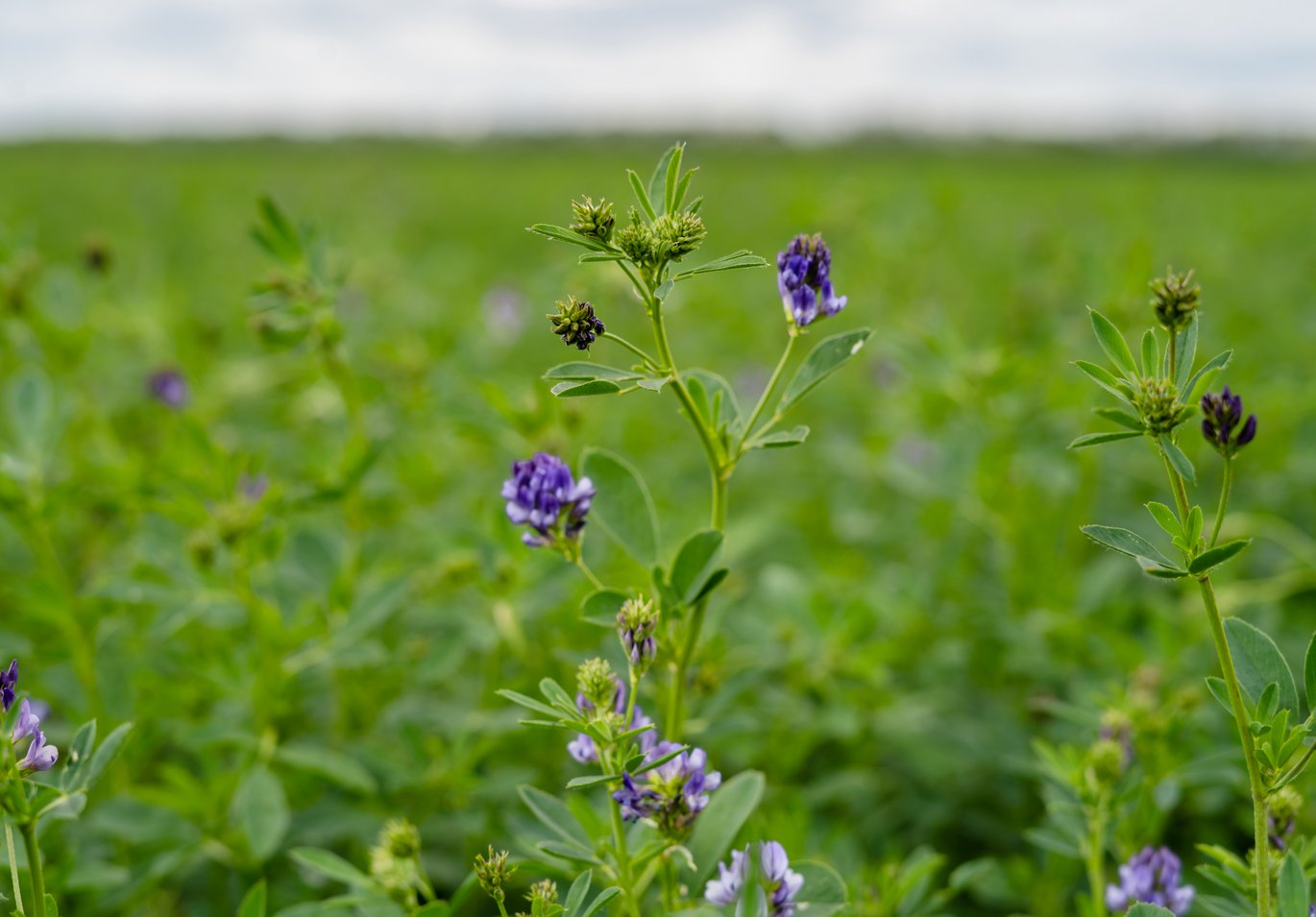Alfalfa protein may become the sustainable food ingredient of the future
Researchers from Aarhus University are looking for sustainable proteins to replace soy and eggs in food. Protein from the legume alfalfa contains all the essential amino acids, and new studies show that it even has several properties that are crucial in the production of a long list of foods - from fromage to meat alternatives.

Should your fromage or meat alternatives be made from alfalfa in the future?
Researchers from Aarhus University are working towards this, and there are many good reasons for this.
First and foremost, it is necessary to find more sustainable alternatives to the proteins that are part of our food at the moment - including soy which is imported from abroad. Likewise, some types of animal protein, such as milk protein, may be replaced with plant protein.
And protein from the legume alfalfa is a good candidate. Not only does the plant thrive in a Nordic climate, it also provides more protein per hectare than crops such as soy.
Trine Kastrup Dalsgaard from the Department of Food Science says:
- The soluble protein that is most abundant in alfalfa is formally called RuBisCo. It is important for the photosynthesis of all plants, and therefore it is actually the most abundant protein in the world. Therefore, it is not only found in alfalfa, but the protein content is just really high in alfalfa, and this explains why that plant is interesting to us.
Previous studies have even shown that the alfalfa protein contains all of the essential amino acids, and therefore Signe and a team of researchers have now studied the protein to find out how to include it in food.
An ingredient with many good properties
The alfalfa protein is extracted by pressing the alfalfa through a double screw press followed by pH adjustment to pH 4-4.5, at which pH the proteins precipitate.
First, the researchers in this study tested the solubility of the protein, as it affects two crucial properties in food production: gelation and foam.
More precisely, they have exposed the protein to extreme pH values, both high and low, because it can increase their functional properties and make them easier to spot.
However, as the study has established that pH 12 significantly destroys the proteins, only pH values from 11 and below should be taken into account.
- We could conclude that the solubility of alfalfa protein is good when the pH was either increased or decreased and then returned to neutral pH. This was promising for the other properties, and we were able to confirm this, when we had a closer look at them, says Signe Hjerrild Nissen from the Department of Food Science.
Can be included in everything from fromage to meat alternatives
Proteins are generally sensitive to heat and pH influences, which will change their structure. This is important as it can make the protein gel, which gives the food a firmer structure. This is, among other things, what happens when we fry an egg.
In the study, the gelling ability of the alfalfa protein proved to be quite good when exposed to a high pH, followed by a neutral pH:
- This makes it a promising ingredient in many different foods, where gelation plays an important role, including fromage and new meat alternatives, says Signe Hjerrild Nissen.
The ability of the protein to foam, and thus be included in foods such as bread and cake, also proved to be good, and it was increased when the pH was either raised or lowered. However, the effect was significantly greater by also adding salt.
From previous studies, it is already known that the alfalfa protein has a good emulsifying ability, and therefore the researchers have not looked into it this time.
- The emulsifying ability makes it possible to make a mayonnaise from alfalfa powder and oil instead of using eggs, so maybe alfalfa mayonnaise will be on the shelves in the future, Signe Hjerrild Nissen suggests.
When can we find it on the shelves?
When the alfalfa protein has so many good properties, it may come as a surprise that it is not already an important part of our food production.
- There are some components in alfalfa that can make it difficult to work with, namely chlorophyll and polyphenols, which can give a bitter taste, and we are investigating this further, Signe Hjerrild Nissen explains:
- In addition, it is important that we get rid of the green color in the alfalfa protein, so we get a white protein concentrate that is more suitable for food. This is something that we are currently working on here at the department, but there is still some way to go and we are not yet able to say, when it will be available in the supermarket.
Signe Hjerrild Nissen is currently studying how processing affects the content of vitamins, fatty acids and minerals in alfalfa protein to ensure that the nutritional value is the best possible.
| Additional information | |
We strive to ensure that all our articles live up to the Danish universities' principles for good research communication (scroll down to find the English version on the website). Because of this the article will be supplemented with the following information: | |
| Study type | Experiments |
| Funding | The study was supported by the project ”Central Denmark Region - Development program for the bioeconomy in the Central Denmark Region” and the EU regional funding project on "Innovation collaborations on the exploitation of green biomass" with regional co-funding |
| Collaboration partners | Department of Food Science, Aarhus University Department of Animal Science, Aarhus University |
| Read more | |
| Contact | Signe Hjerrild Nissen, PhD student, Department of Food Science, Aarhus University, nissen@food.au.dk, Mobile: +45 2243 3825 |
